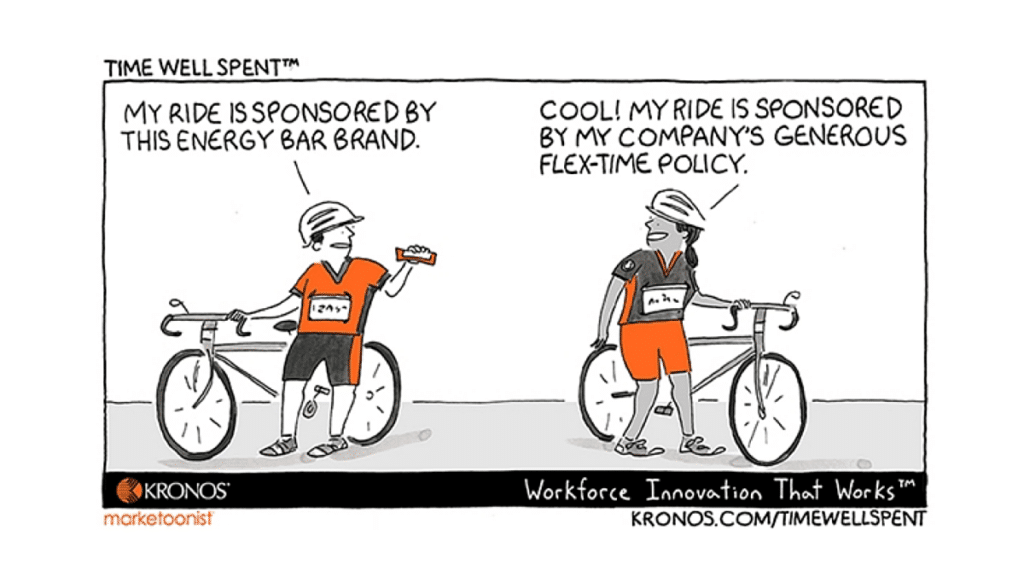Flextime: Organizations Should Make it More Flexible

Today’s Time Well Spent from our friends at Kronos reminded me that we need to be more flexible when it comes to employee’s work time. I’d like to think organizations know that.
But it also reminded me that it’s possible we’ve put up barriers to keep this from happening. For example, is it possible that we’ve made programs designed to help employees – like flextime – inflexible? You know what I mean. Organizations might have created a flex-time policy or program but placed so many rules and restrictions on it that flextime isn’t actually very flexible.
Maybe we need to look at how we view flextime.
Think of flexibility in three ways: places, days, and hours. There are so many terms out there associated with some sort of flexible work – remote work, virtual work, flexible time, telework, etc. You get my point. I like to think of flextime in three ways: 1) the place where you work, 2) the days of the work week, and 3) the work hours in a day. Not every employee can have flexibility in all three areas. But it’s possible that most jobs can have flexibility in at least one of them.
Managers need to be trained on how to approve flextime. Dare I say, it’s easy to create an inflexible schedule. It’s much more challenging to put the puzzle together known as employee flextime. Organizations should give managers the training and support they need to work on the puzzle, so to speak. We want managers to engage and retain workers. This is one way to do it – by giving employees a flexible work schedule. It also doesn’t hurt that employees will see managers putting in the effort to make it happen.
Let employees know in advance when flexibility will be a challenge. The first two points in this post have been focused on giving employees something they really want – flexibility. I know some of you might be saying, “There’s no way we can do this all the time. Our business just doesn’t allow.” I get it. And your employees will too. If you tell them in advance. So, when there’s going to be a big deadline or business is super busy, let employees know. “I know some of you are accustomed to more flexibility, but I’m not going to be able to do that this week.”
I’ve always thought that if managers worked really hard to give employees flexibility then when those times occur when they can’t, employees would be understanding. Just tell people in advance, so they can make arrangements.
Flextime is something that employees would love to have. It’s a huge selling point in the employee value proposition (EVP). And honestly, it can cost very little to do. What’s even better is that today’s technology can help make it happen.
12